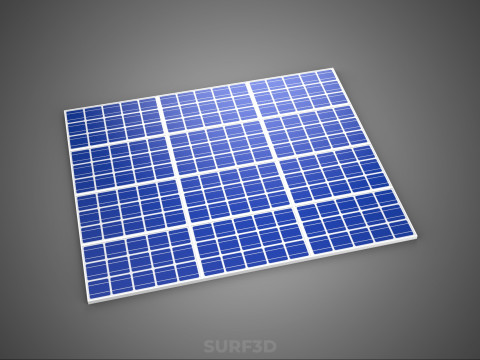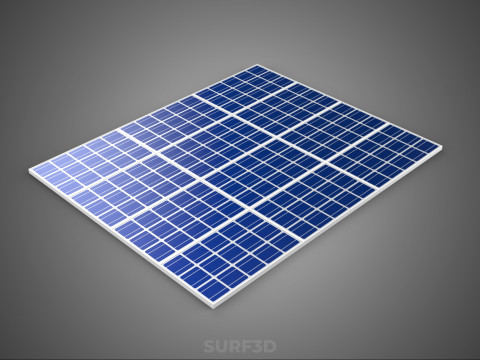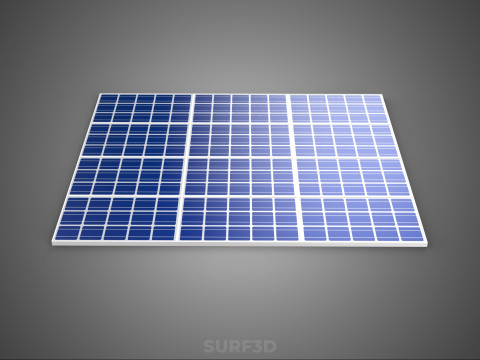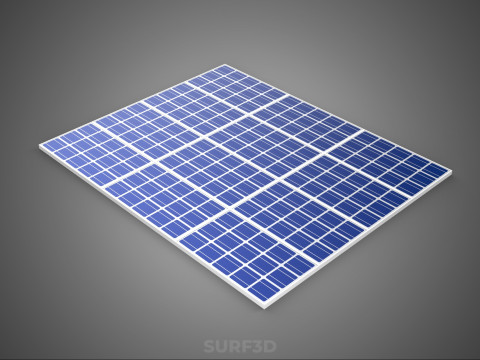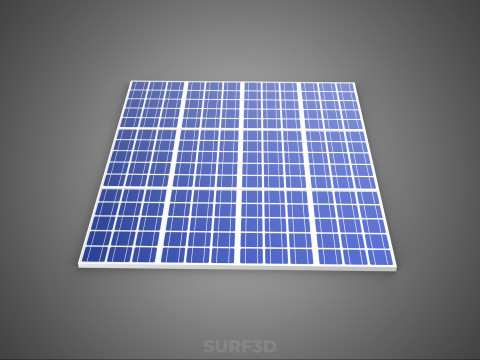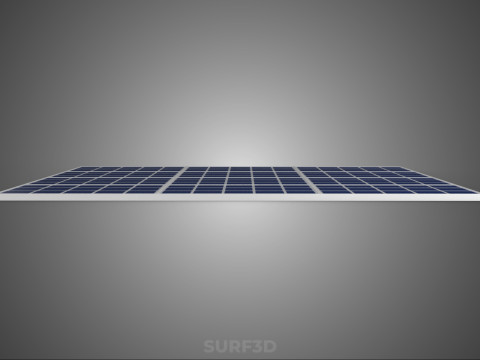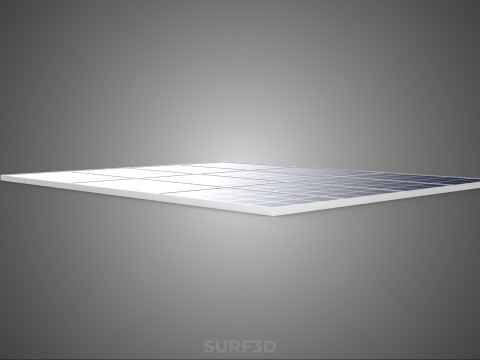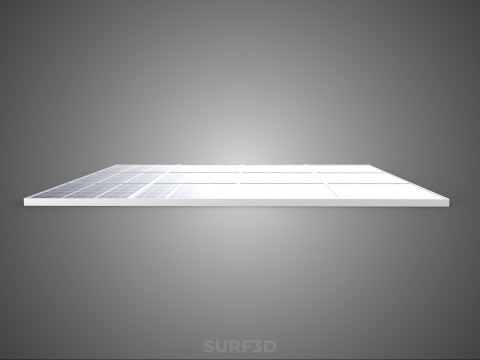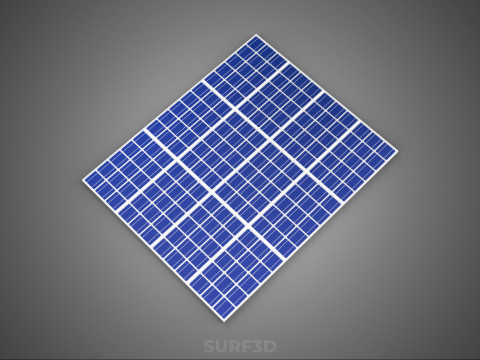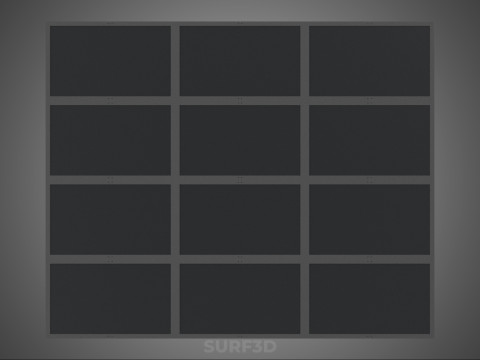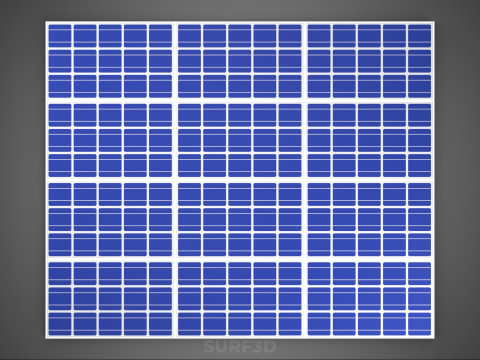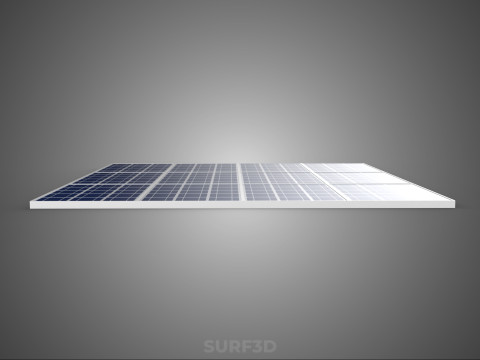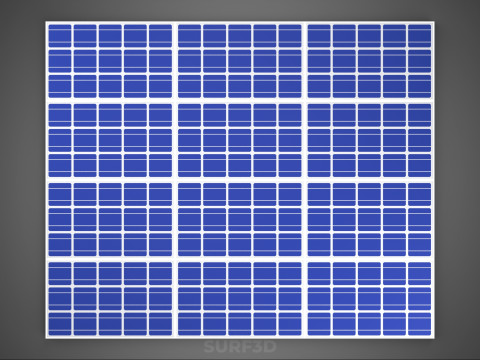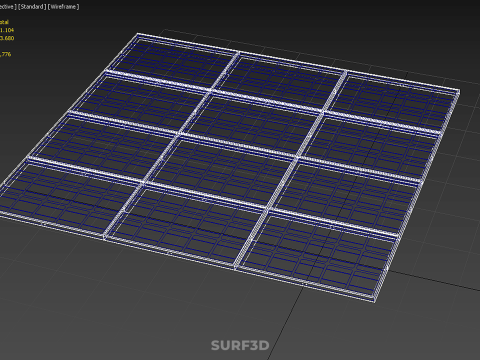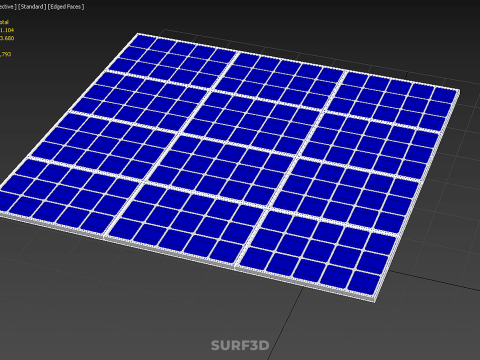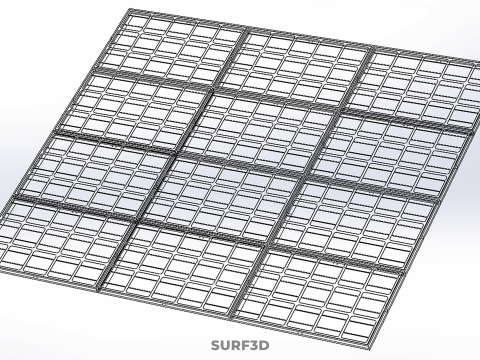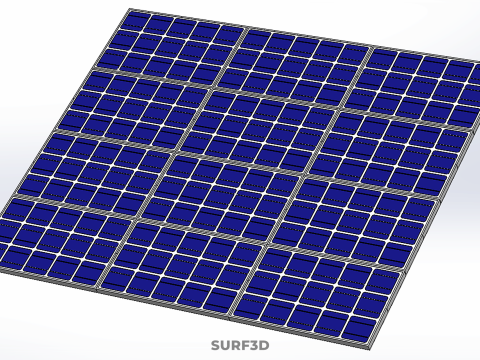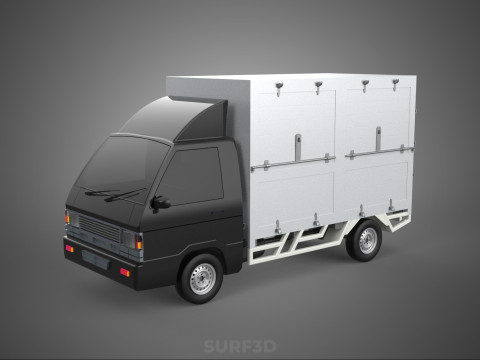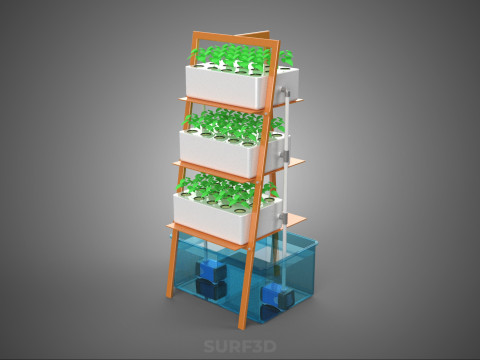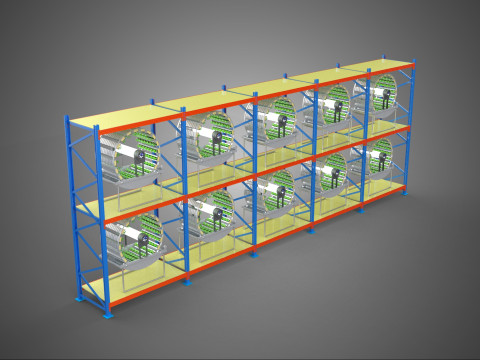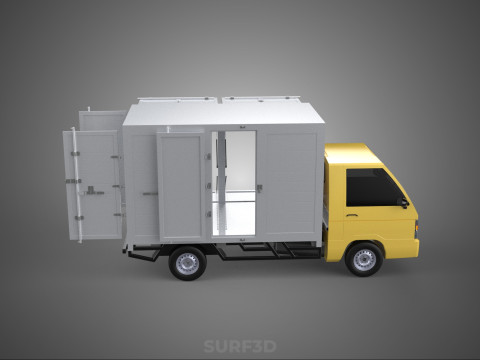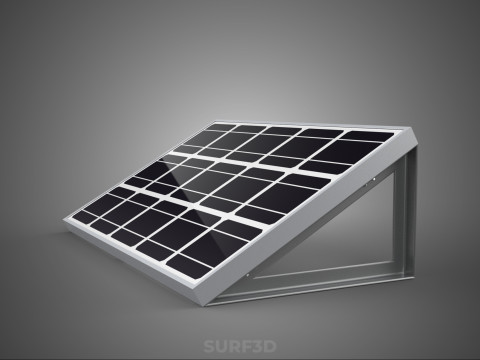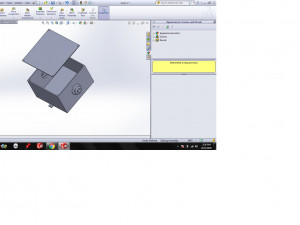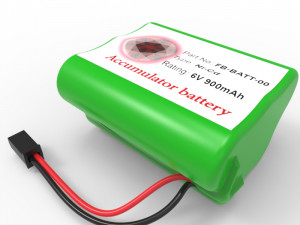阵列太阳能电池板模块 光伏可再生太阳能 3D 模型
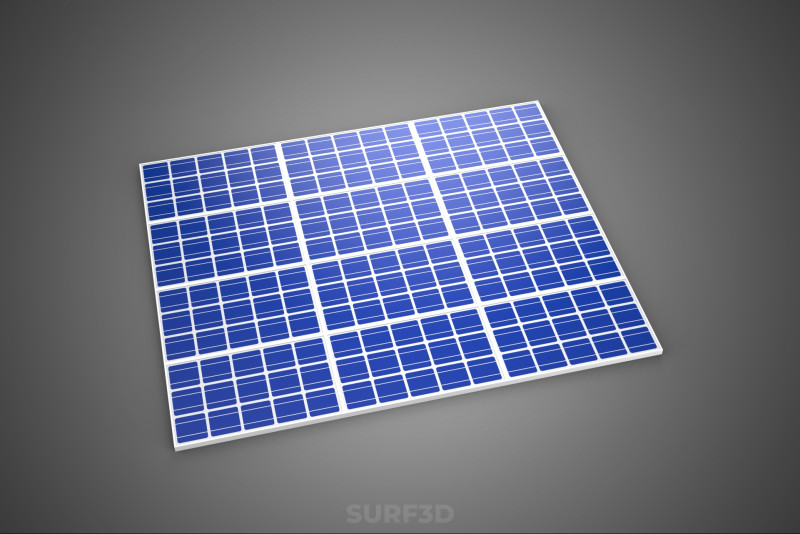
- 请求作者的产品支持
- 可用的格式:
- 项目 ID:595421
- 日期: 2025-08-28
- 多边形:31104
- 顶点:43680
- 动画:No
- 纹理:No
- 操纵:No
- 材料:
- 低聚:No
- 集合:No
- UVW 贴图:No
- 使用插件:No
- 打印准备:No
- 3D扫描:No
- 成人内容:No
- PBR:No
- 人工智能培训:No
- 几何:Poly NURBS
- 包装 UVs:Unknown
- 日期:237
描述
High-quality 3D assets at affordable prices — trusted by designers, engineers, and creators worldwide. Made with care to be versatile, accessible, and ready for your pipeline.
Included File Formats
This model is provided in 14 widely supported formats, ensuring maximum compatibility:
• - FBX (.fbx) – Standard format for most 3D software and pipelines
• - OBJ + MTL (.obj, .mtl) – Wavefront format, widely used and compatible
• - STL (.stl) – Exported mesh geometry; may be suitable for 3D printing with adjustments
• - STEP (.step, .stp) – CAD format using NURBS surfaces
• - IGES (.iges, .igs) – Common format for CAD/CAM and engineering workflows (NURBS)
• - SAT (.sat) – ACIS solid model format (NURBS)
• - DAE (.dae) – Collada format for 3D applications and animations
• - glTF (.glb) – Modern, lightweight format for web, AR, and real-time engines
• - 3DS (.3ds) – Legacy format with broad software support
• - 3ds Max (.max) – Provided for 3ds Max users
• - Blender (.blend) – Provided for Blender users
• - SketchUp (.skp) – Compatible with all SketchUp versions
• - AutoCAD (.dwg) – Suitable for technical and architectural workflows
• - Rhino (.3dm) – Provided for Rhino users
Model Info
• - All files are checked and tested for integrity and correct content
• - Geometry uses real-world scale; model resolution varies depending on the product (high or low poly)
• • - Scene setup and mesh structure may vary depending on model complexity
• - Rendered using Luxion KeyShot
• - Affordable price with professional detailing
Buy with confidence. Quality and compatibility guaranteed.
If you have any questions about the file formats, feel free to send us a message — we're happy to assist you!
Sincerely,
SURF3D
Trusted source for professional and affordable 3D models.
More Information About 3D Model :
A photovoltaic (PV) system harnesses radiant energy from the Sun, a renewable energy source, to generate electricity through a process known as the photovoltaic effect. This sophisticated technology is composed of hierarchical structures, beginning with the fundamental **photovoltaic cell**, assembling into **modules** (commonly known as solar panels), and ultimately forming **arrays** that constitute complete power-generating units.
At its core, a **photovoltaic cell** is a semiconductor device, typically fabricated from silicon (either monocrystalline, polycrystalline, or amorphous) or thin-film materials (e.g., cadmium telluride, copper indium gallium selenide, perovskites). The cell's function is predicated on the **photovoltaic effect**, where incident photons from **Sun energy** (solar radiation) are absorbed by the semiconductor material. This absorption excites electrons, generating electron-hole pairs. Within the cell, an intrinsic electric field, typically formed by a p-n junction, separates these charge carriers. Electrons are directed to one terminal, and holes to the other, creating a potential difference. When an external circuit is connected, these separated charges flow as direct current (DC) **energy**. The efficiency of a cell is defined by the ratio of electrical power produced to the solar power incident upon its surface.
Individual **photovoltaic cells** produce a relatively small amount of **energy** (e.g., 0.5-0.6 volts). To achieve practical voltage and current levels for various applications, multiple cells are electrically interconnected, usually in series, and then encapsulated to form a **photovoltaic module**, more commonly referred to as a **solar panel**. A module serves to protect the delicate cells from environmental degradation (moisture, dust, physical impact) through layers of encapsulants (e.g., ethylene vinyl acetate or EVA), a transparent front sheet (typically tempered glass), and a durable backsheet. An aluminum frame often surrounds the perimeter for structural integrity and ease of mounting. A junction box on the module's rear houses electrical connections and bypass diodes, which prevent power loss and hot spots when parts of the module are shaded. The power output of a module is rated in Watt-peak (Wp) under standard test conditions.
For applications requiring higher power output, multiple **photovoltaic modules** are interconnected electrically, both in series (to increase voltage) and in parallel (to increase current), to form a **photovoltaic array**. A solar **array** can range in size from small residential rooftop installations to vast utility-scale **solar energy** farms spanning hectares. The physical structure supporting the modules in an array can be fixed-tilt, seasonally adjustable, or equipped with tracking systems (single-axis or dual-axis) that follow the Sun's path across the sky to maximize **energy** capture. Beyond the modules, a complete PV system includes "balance of system" (BOS) components such as inverters (to convert DC electricity into alternating current, AC, for grid compatibility or home use), wiring, mounting hardware, and monitoring equipment.
The entire system represents a key technology within the **renewable energy** sector. Unlike fossil fuels, solar **energy** is inexhaustible on a human timescale, produces no greenhouse gas emissions or air pollutants during operation, and contributes to energy independence and sustainability. The increasing adoption of **solar photovoltaic** technology is a pivotal element in global efforts to mitigate climate change and transition towards a cleaner, more sustainable **energy** future, directly converting the radiant power of the Sun into usable electricity.
KEYWORDS: Photovoltaic, Solar Energy, Renewable Energy, Solar Cell, Solar Module, Solar Panel, Solar Array, Photovoltaic Effect, Semiconductor, Silicon, Thin-Film, Electron-Hole Pair, Direct Current, Electricity Generation, Energy Conversion, Grid-****, Off-Grid, Inverter, Greenhouse Gas Reduction, Sustainability, Photons, Irradiance, P-N Junction, Encapsulation, Watt-Peak, Solar Radiation, Balance of System, Energy Independence, Clean Energy.
需要更多的格式吗?
如果你需要一个不同的格式,请打开一个新的支持票和为此请求。我们可以转换到 3D 模型: .stl, .c4d, .obj, .fbx, .ma/.mb, .3ds, .3dm, .dxf/.dwg, .max. .blend, .skp, .glb. 免费格式转换我们不转换 3d 场景 以及 .step, .iges, .stp, .sldprt 等格式。!
使用信息
阵列太阳能电池板模块 光伏可再生太阳能 - 您可以根据基本许可或扩展许可,将此免版税 3D 模型用于个人或商业用途。基本许可涵盖大多数标准用例,包括数字广告、设计和可视化项目、商业社交媒体账户、原生应用、Web 应用、视频游戏以及实体或数字最终产品(免费和出售)。
扩展许可包含基本许可授予的所有权利,没有任何使用限制,并允许在免版税条款下将 3D 模型用于无限的商业项目。
阅读更多


 English
English Español
Español Deutsch
Deutsch 日本語
日本語 Polska
Polska Français
Français 中國
中國 한국의
한국의 Українська
Українська Italiano
Italiano Nederlands
Nederlands Türkçe
Türkçe Português
Português Bahasa Indonesia
Bahasa Indonesia Русский
Русский हिंदी
हिंदी